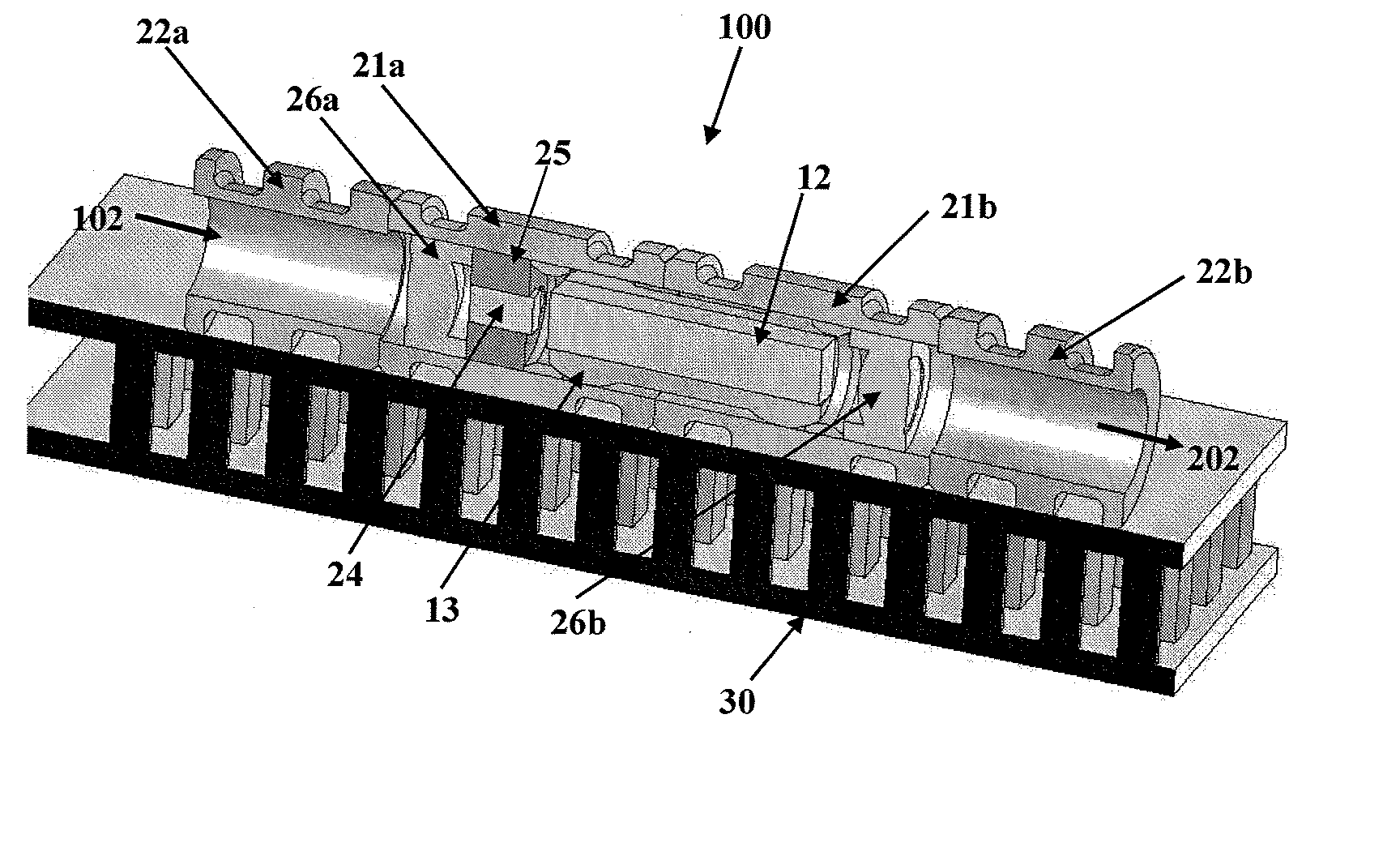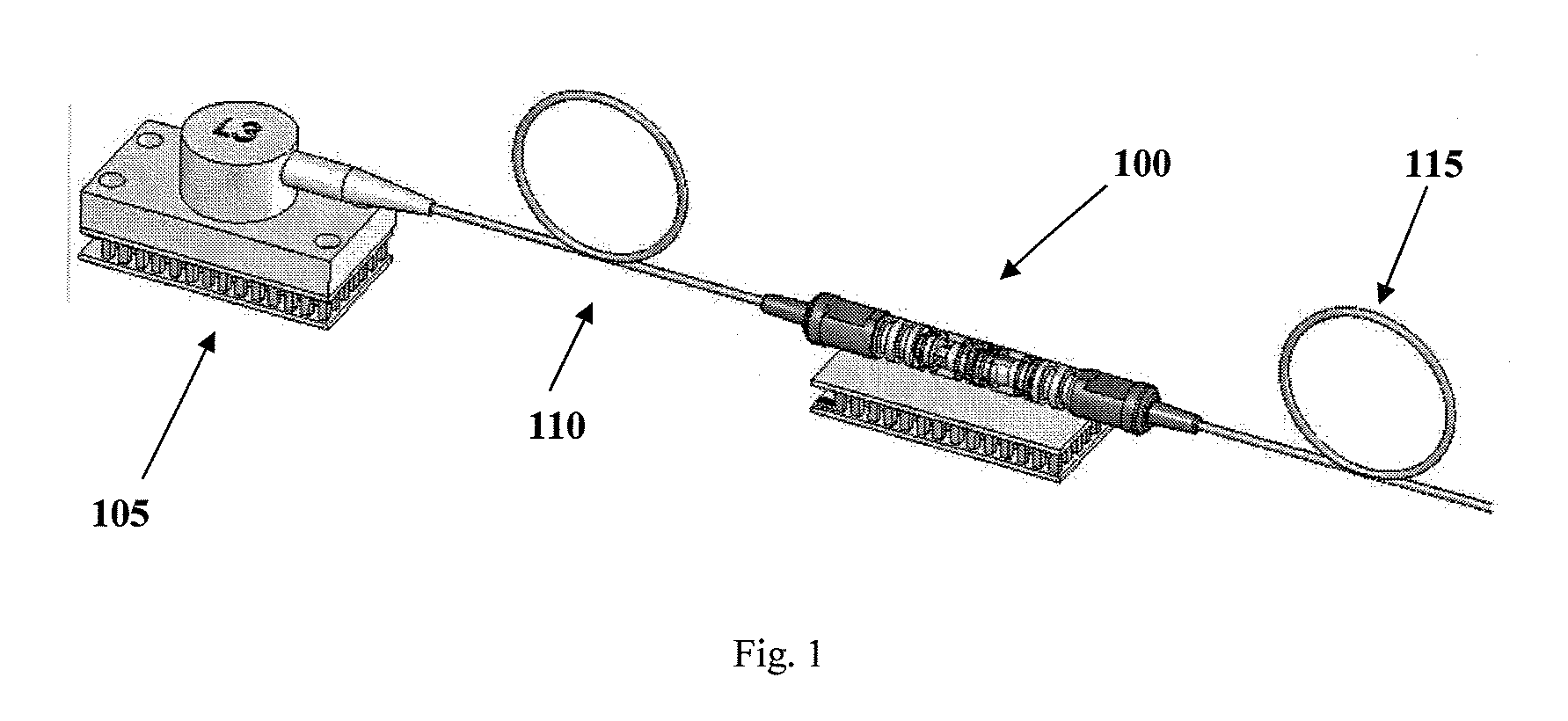Modular Solid-State Laser Platform Based On Coaxial Package And Corresponding Assembly Process
a laser platform and coaxial package technology, applied in the direction of optical resonator shape and construction, optical elements, instruments, etc., can solve the problems of large and cumbersome products, failure to capitalize on the thermal management and ruggedness of fiberized configuration, and no breakthrough in product performance, etc., to achieve the effect of reducing power consumption, reducing size and broadening the operating temperature rang
- Summary
- Abstract
- Description
- Claims
- Application Information
AI Technical Summary
Benefits of technology
Problems solved by technology
Method used
Image
Examples
Embodiment Construction
[0047] The present invention relates to the application of coaxial packaging techniques to diode-pumped passively Q-switched microchip lasers.
[0048]FIG. 1 shows an exemplary application of the present invention, in which a microlaser mounted within a coaxial package 100, receives pump energy from a fiber-coupled laser diode source 105 (e.g. L3 pump module) through fiber 110. The resulting output from the microlaser 100 is coupled into fiber 115, which is available for further application to an optical amplifier, distributed temperature sensing or generation of supercontinuum, or similar.
[0049] An advantage of the disclosed coaxial packaging 100 is to simplify the use of the fiber-coupled pump diodes 105, leading to a more homogeneous pump beam, which then provides near-optimal pumping of the microlaser 100.
[0050] In addition, the use of a coaxially packaged microlaser 100 in conjunction with standard communication components brings benefits through volume cost reduction. The micr...
PUM
 Login to View More
Login to View More Abstract
Description
Claims
Application Information
 Login to View More
Login to View More - R&D
- Intellectual Property
- Life Sciences
- Materials
- Tech Scout
- Unparalleled Data Quality
- Higher Quality Content
- 60% Fewer Hallucinations
Browse by: Latest US Patents, China's latest patents, Technical Efficacy Thesaurus, Application Domain, Technology Topic, Popular Technical Reports.
© 2025 PatSnap. All rights reserved.Legal|Privacy policy|Modern Slavery Act Transparency Statement|Sitemap|About US| Contact US: help@patsnap.com



